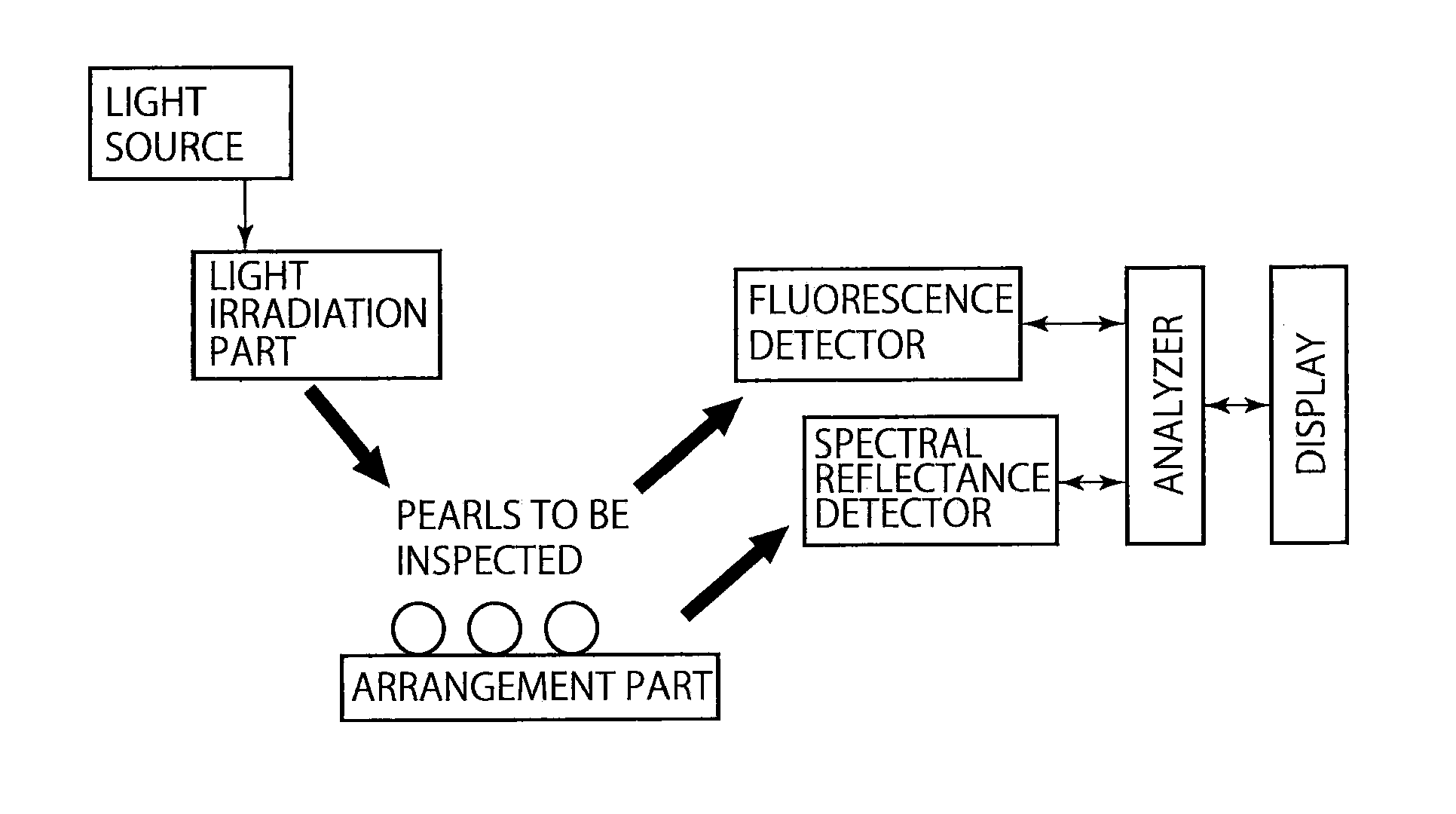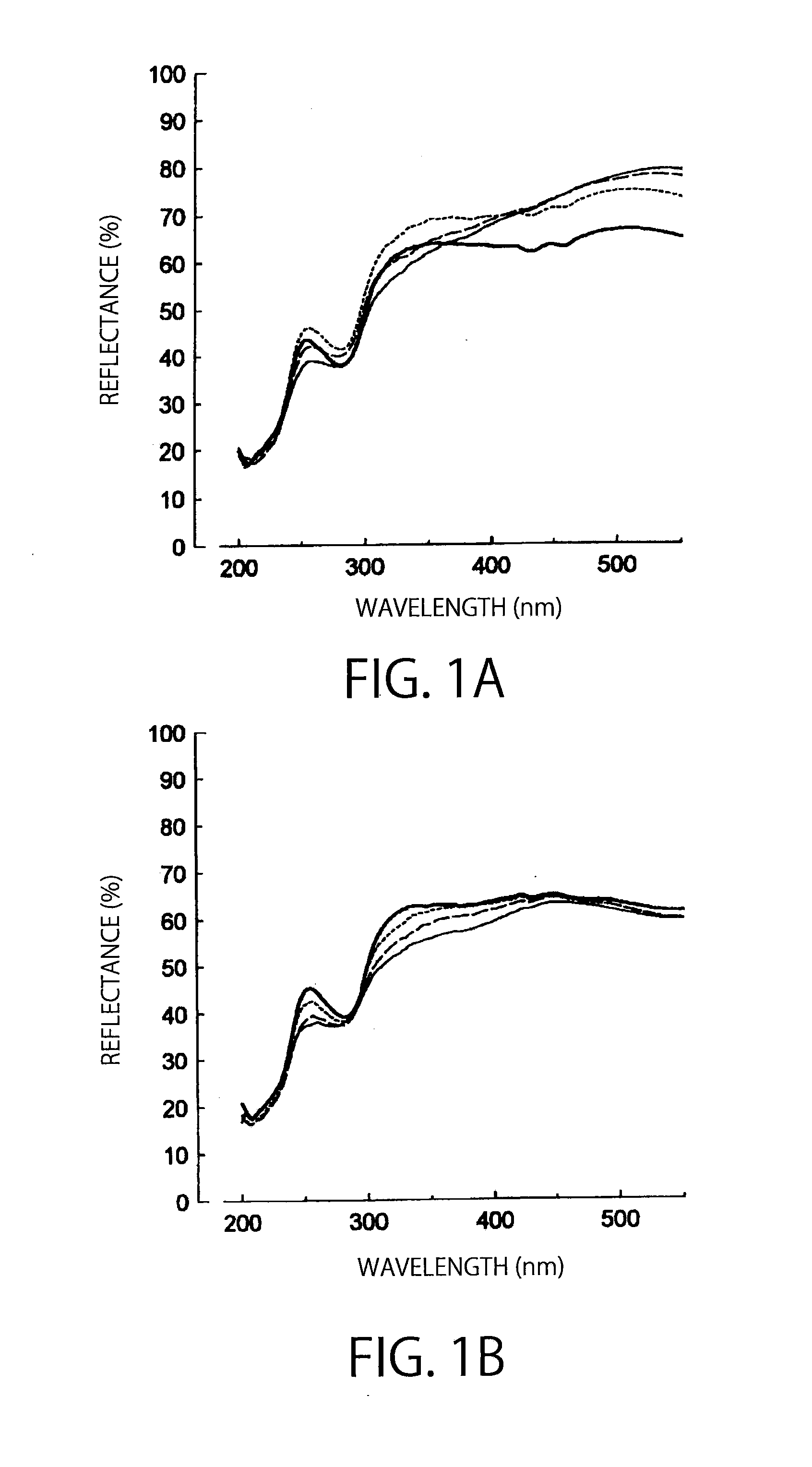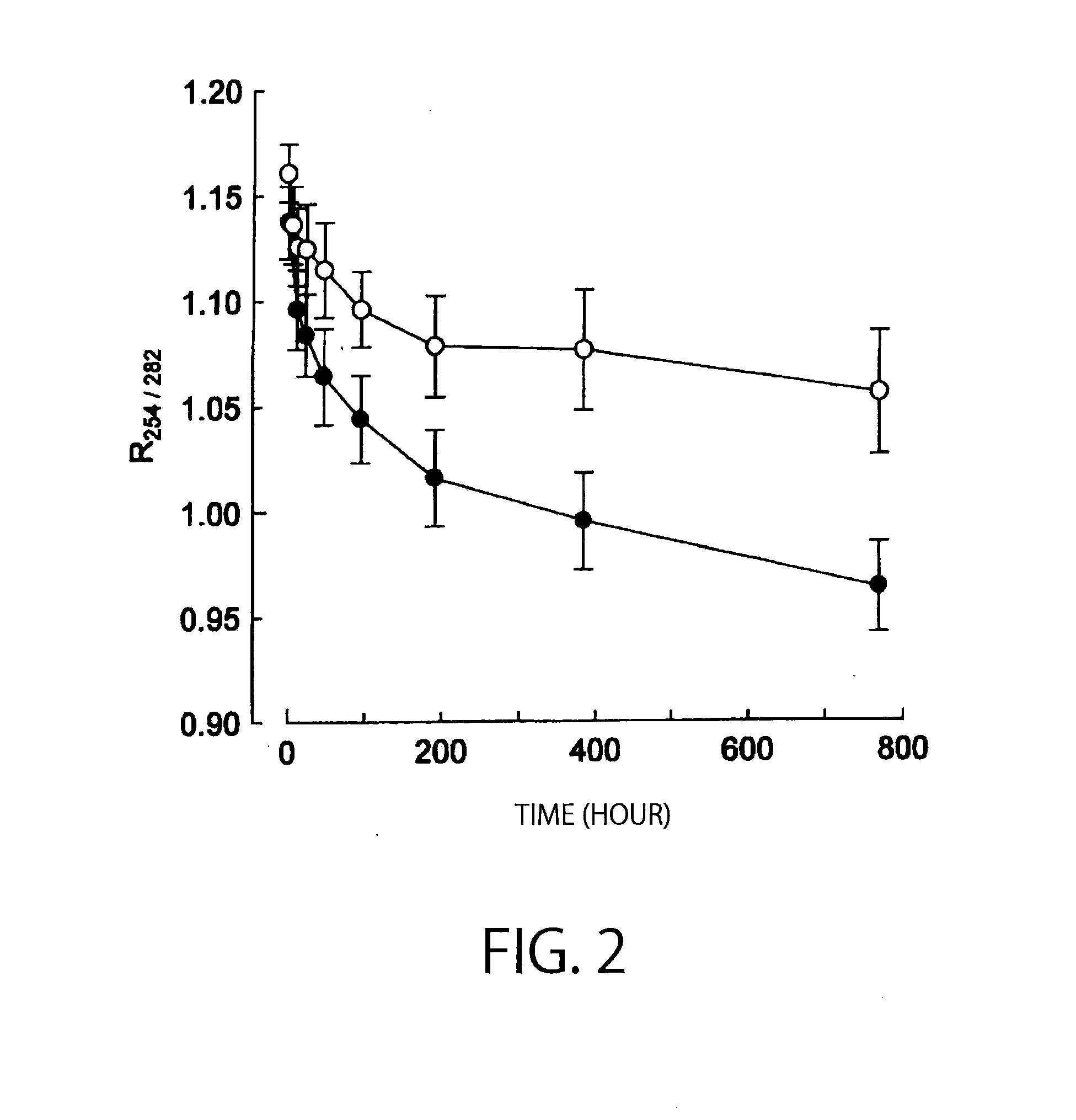Method for non-destructive judgment of pearl quality
a non-destructive and pearl technology, applied in the field of pearl quality non-destructive judgment, can solve the problems of aging deterioration, almost impossible visual judgment of deterioration of pearl protein, disassembly of pearl luster, etc., and achieve the effect of rapid and easy measurement of pearl quality and easy operation
- Summary
- Abstract
- Description
- Claims
- Application Information
AI Technical Summary
Benefits of technology
Problems solved by technology
Method used
Image
Examples
example 1
(1-1) Materials and Methods
[0069]20 Akoya pearls having a diameter of 6.0 to 7.0 mm and a nacreous powder sample obtained from the nacre of Akoya oyster shells were used as materials to be inspected. In this connection, about 250 g of the nacreous powder sample was obtained by completely removing the prismatic layer and the pellucid layer portions from pearl shells for 50 individuals of Akoya oyster (3 years oyster) produced by artificial seedling collection and grinding the shells into a size of less than 0.3 mm. The sample was treated basically in darkness at low temperature.
(1-2) Measurement of Reflectance Spectrum
[0070]Reflection spectrum was measured in the range of 200 to 550 nm with a spectrophotometer equipped with an integrating sphere unit (V-570, JASCO). In this connection, a mask with a size of 5 mm was used in the measurement.
(1-3) Measurement of Fluorescence Spectrum
[0071]Fluorescence spectrum was measured in the range of 300 to 400 nm with a spectrofluorophotometer (F...
example 2
[0085]The influence of chemical agents (bleaches) on Akoya pearls was evaluated non-destructively.
[0086]In this connection, the methods and apparatuses of measurement were the same as used in Example 1.
[0087]Specifically, Akoya pearls (36, untreated pearls having a diameter of 5.5 mm) were prepared and divided into 4 groups. Respective groups were treated under the following conditions: treatment A (bleach concentration: 1.5%, solvent: water), treatment B (bleach concentration: 3.0%, solvent: water), treatment C (bleach concentration: 1.5%, solvent: alcoholic solvent), treatment D (bleach concentration: 3.0%, solvent: alcoholic solvent). In this connection, a commercially available bleach solution usually used in the art was used as the bleaching solution.
[0088]As for the pearls under the respective treatment conditions, the ratio R254 / 282 of the spectral reflectance at a wavelength of 254 nm (R254) and the spectral reflectance at a wavelength of 282 nm (R282) was measured with the ...
example 3
[0099]771 normal Silver lipped pearls and 8 deteriorated Silver lipped pearls were prepared (respectively obtained from commercial sources), and the ratios of the spectral reflectances R254 / 282 and the fluorescence evaluation value in the ultraviolet range were measured in the same manner as in Example 2.
[0100]The results are shown in FIG. 8A.
[0101]Furthermore, the ratio of the spectral reflectances R254 / 282, the fluorescence intensities at a wavelength of 340 nm (FI340) and the fluorescence evaluation values in the ultraviolet range of 74 pearls sampled from the normal Silver lipped pearls by random sampling and the 8 deteriorated Silver lipped pearls were measured in the same manner as in Example 2.
[0102]The results are shown in FIGS. 8B to 8D.
[0103]It may be judged from the results that the pearls have been deteriorated, as the pearls of Lot 2 (O) have the ratio R254 / 282, FI340 and the fluorescence evaluation value in the ultraviolet range lower than those of the other lot.
PUM
| Property | Measurement | Unit |
|---|---|---|
| Ra | aaaaa | aaaaa |
| Ra | aaaaa | aaaaa |
| wavelength | aaaaa | aaaaa |
Abstract
Description
Claims
Application Information
 Login to View More
Login to View More - R&D
- Intellectual Property
- Life Sciences
- Materials
- Tech Scout
- Unparalleled Data Quality
- Higher Quality Content
- 60% Fewer Hallucinations
Browse by: Latest US Patents, China's latest patents, Technical Efficacy Thesaurus, Application Domain, Technology Topic, Popular Technical Reports.
© 2025 PatSnap. All rights reserved.Legal|Privacy policy|Modern Slavery Act Transparency Statement|Sitemap|About US| Contact US: help@patsnap.com



